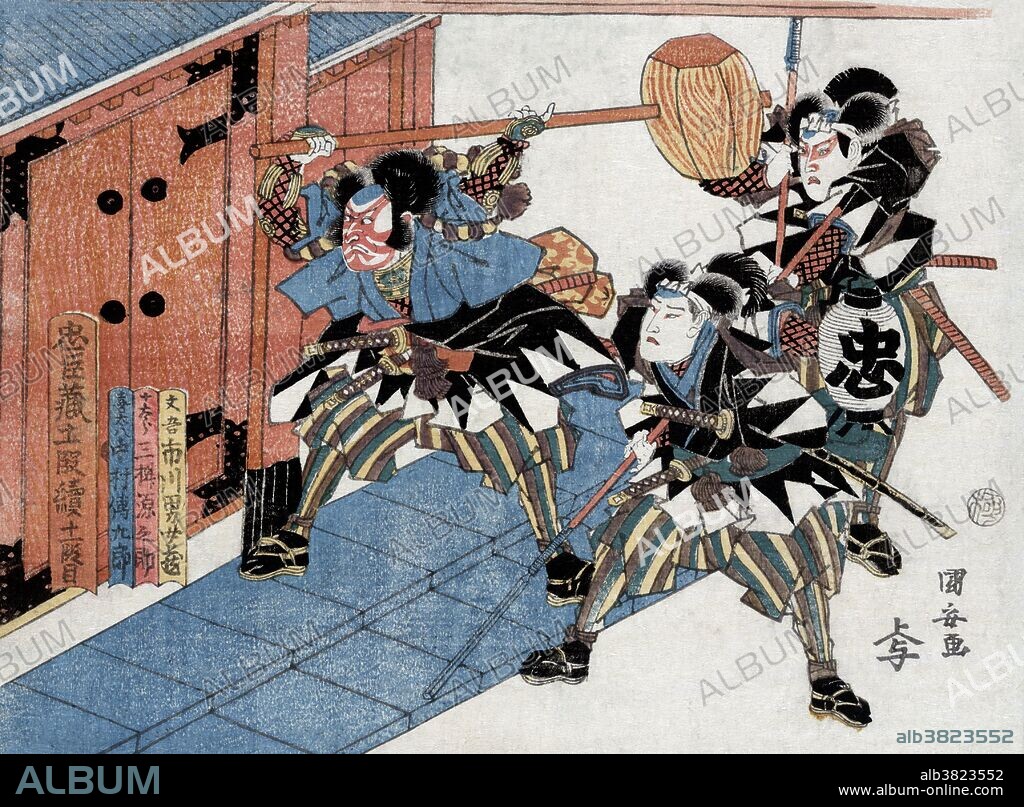alb3823552
Chushingura, Revenge of the 47 Ronin, 18th Century

|
Zu einem anderen Lightbox hinzufügen |
|
Zu einem anderen Lightbox hinzufügen |



Haben Sie bereits ein Konto? Anmelden
Sie haben kein Konto? Registrieren
Dieses Bild kaufen

Titel:
Chushingura, Revenge of the 47 Ronin, 18th Century
Untertitel:
Siehe automatische Übersetzung
Entitled: "Juichidanme". Act eleven of the Chushingura. Print showing three Ronin samurai attacking the entrance Kira Yoshinaka's home. Chushingura is the title given to fictionalized accounts in Japanese literature, theater, and film that relate the historical incident involving the Forty-seven Ronin. The story tells of a group of samurai who were left leaderless (becoming ronin) after their daimyo (feudal lord) Asano Naganori was compelled to commit seppuku (ritual suicide) for assaulting a court official named Kira Yoshinaka. The ronin avenged their master's honor by killing Kira, after waiting and planning for a year. In turn, the ronin were themselves obliged to commit seppuku for committing the crime of murder. This true story was popularized in Japanese culture as emblematic of the loyalty, sacrifice, persistence, and honor that people should preserve in their daily lives. The historical basis for the narrative began in 1701. Woodcut by Kuniyasu Utagawa, published circa 1815-18.
Bildnachweis:
Album / LOC/Science Source
Freigaben (Releases):
Model: Nein - Eigentum: Nein
Rechtefragen?
Rechtefragen?
Bildgröße:
4350 x 3204 px | 39.9 MB
Druckgröße:
36.8 x 27.1 cm | 14.5 x 10.7 in (300 dpi)
Schlüsselwörter:
18. JAHRHUNDERT • 18. JH. • BERÜHMT • BERÜHMTE PERSÖNLICHKEIT • BLOCK-DRUCK • EREIGNIS • HOLZARBEIT: SCHNITZEREI • ILLUSTRATION • ILLUSTRATIONS • JAPAN • JAPANER • JAPANERIN • JAPANISCH • MANN • NOTABEL • ORMNAMENT: JAPANISCH • PROMINENZ • RITTERTUM • RONIN • SAMURAI (VOELKERKUNDE) • SAMURAI (VÖLKERKUNDE) • SCHNITZEREI: HOLZ • TECHNIK: HOLZSCHNITT
 Pinterest
Pinterest Twitter
Twitter Facebook
Facebook Link kopieren
Link kopieren Email
Email
